What About Bob?
The fascinating history of Marvel’s Sentry
I want you to try something. Close your eyes and imagine a superhero. What comes to mind? There’s probably a pretty good chance you pictured Superman or something similar. He’s practically been the platonic ideal of a superhero since his creation in 1938 by Jerry Siegel and Joe Shuster. His muscular build, his tights and cape costume, his seemingly endless array of superpowers (flight, super strength, invulnerability, super speed, heat vision, etc.), and his unwavering dedication to always doing the right thing are ingrained in the popular consciousness at this point. It should come as no surprise then, that various creators and publishers have tried to create their own versions of Superman with varying degrees of success. Many of these characters were created as a means of satirizing Superman or criticizing superhero comics in general. Popular examples include Homelander, Omni-Man, Apollo, Supreme, and Plutonian among others. Marvel Comics has an entire stable of Superman analogues. Hyperion, Gladiator, Blue Marvel, Sun God, Ikaris, and Omega the Unknown have all served as stand-ins for Superman in the Marvel Universe in one way or another, but the most fascinating example might be a character called Sentry.
When it comes to Sentry, the story of the creation of the character is arguably more interesting than the character itself. To properly explain this, I need to take you back to 2000 and the importance of a magazine called Wizard. If you were an obsessive comic book reader and collector in the ‘90s and ‘00s (me), then you were almost certainly reading Wizard. It was a monthly magazine that covered all things comics. It had news about upcoming comics, interviews with creators and publishers, casting ideas for fictional comic book movies, etc. If there was a big story in the comic book industry, then Wizard was covering it. Marvel had published a short note in the letters page in 1999’s Daredevil #9 that legendary artist Artie Rosen was dealing with health issues, and they asked fans to send him some well wishes. In Wizard #103 (cover date April 2000), the magazine published an obituary for Rosen stating he had passed away in January. Very sad.
Then something strange happened. In the following month’s issue of Wizard, a story was published reporting on a rumor that had been circulating that Stan Lee might have created a Silver Age superhero prior to the introduction of the Fantastic Four in 1961. Curious.
Then came the big bombshell in Wizard #105 (cover date June 2000). Wizard ran a story in that issue that Artie Rosen’s widow (Blanche Rosen) had discovered a box belonging to Artie full of various papers and documents that she had delivered to Marvel’s offices in New York. Writer Paul Jenkins had started thumbing through the box’s contents, and he discovered character sheets for a superhero created by Rosen and Stan Lee named Sentry that appeared to be a Superman analogue. Even more surprising than that, the box contained a comic book featuring the character called Startling Stories #1 from Stan and Rosen that apparently predated Fantastic Four #1. Jenkins and his frequent artist collaborator Jae Lee asked if they could create a new comic starring Sentry to be published under the Marvel Knights imprint. Stan Lee reportedly gave his blessing, and the two launched a miniseries simply titled Sentry later that year.
Pretty wild story! It’s hard to believe that there was not only a long lost character that had seemingly been forgotten by its creators, but there was even a comic book series apparently starring that character that had been forgotten as well. In fact, it’s so hard to believe that it almost sounds made up. That’s because it was made up. This whole saga was actually an elaborate hoax perpetrated by Marvel with assistance from Wizard. For starters, Artie Rosen isn’t a real person. No such artist exists, and the message at the end of Daredevil #9 was just a seed planted to lend more credibility to the hoax when it would begin getting fleshed out in Wizard. This was before the internet had become what it is today, so fans couldn’t just take to Google to learn who Artie Rosen was or when Startling Stories #1 was published. So if Artie Rosen isn’t real (and neither was Startling Stories #1), then who did the character sketches that appeared in Wizard #105? That would be John Romita, Sr. Having a legendary artist from the Silver Age draw these fake Silver Age sketches was a smart touch.
The obvious question to ask at this point is why go through such lengths just to promote a comic book? The answer becomes pretty obvious once you start reading it. The Sentry by Paul Jenkins and Jae Lee introduces us to Robert “Bob” Reynolds. He’s a middle aged man dealing with substance abuse issues, and he is having a difficult time sifting through his own memories. He thinks he was a superhero named Sentry, but he also isn’t sure if he’s just getting confused by childhood memories of comic books he used to read. His memories of superheroics are illustrated by Jae Lee in the style of the comics that would have been published at the time they take place. He recalls helping the Avengers in the 1960s in the style of Jack Kirby. He sees himself in the 1980s in a style reminiscent of Frank Miller. When he thinks back to the 1990s, he’s drawn in the style of Rob Liefeld. In all of these memories, he is fighting against a supervillain named the Void. The more he tries to recall his past, the more the Void begins to manifest itself before him. The other issue raised by all of these memories of himself interacting with the many superheroes in the Marvel Universe is that if they really happened, then why does no one in the world seem to remember him? Bob determines that if the Void is coming back, then he needs to convince the various superheroes of the world to remember him and their past adventures in order to be prepared to stop him. Starting to understand the “hoax” marketing campaign? The story of the hoax mirrors the story in the comic.
The mystery (and the miniseries) is concluded in The Sentry vs. The Void #1 (also by Jenkins and Lee). If you haven’t guessed it already, Sentry and Void are actually the same person. Bob had erased the minds of everyone on the planet (including himself) to prevent his evil alter ego from ever destroying the Earth. Now he’s back. Whoopsie. Fortunately, Bob works with Reed Richards and Doctor Strange to once again wipe everyone’s minds and keep the Void at bay once more. It’s a really good limited series (only five issues plus a few one-shots) that is very well written by Jenkins and expertly illustrated by Lee. It’s the kind of darker and more introspective series that was emblematic of the Marvel Knights imprint. It’s also perfectly self-contained in a way that doesn’t necessitate reading any supplementary material or digging through back issues to understand what’s happening. Sentry (and the Void) had his story concluded in such a way that we easily could have never seen him appear again in future comics, and we never did.
Just kidding.
Sentry returned in 2004’s New Avengers #1 by Brian Michael Bendis and David Finch. We see in a last page reveal that he is locked up in the supervillain prison known as the Raft for the murder of his wife that had taken place in The Sentry limited series. The Avengers are on the scene because Electro was springing a jailbreak, and they happen upon Bob. Bob (wearing his tattered Sentry costume and sporting long hair and a beard) seems resigned to just sit in his cell and not get involved with any of the events taking place. That changes when Carnage begins attacking people with his typical zeal for murder. In what has become arguably his most famous act, Sentry grabs Carnage (who is no pushover), flies him into outer space, and rips him in half without even breaking a sweat.
Pretty good way to establish just how ridiculously powerful this guy is. Sentry becomes a fixture on the Avengers from this point forward for essentially the duration that Bendis is writing the various titles.
A new The Sentry series was launched in 2005 written once again by Jenkins and with art from John Romita, Jr. This series ran for eight issues and served to remove the Void from Bob’s persona and make Sentry a superhero who could actually stay superheroic. It’s much more action packed than the 2000 series.
The second most famous moment of Sentry’s history takes place during the “Dark Reign” era at Marvel. I’m not going to get into all of what that entails, but the important thing is that Norman Osborn is now a major player in the American government and has formed his own “Dark Avengers” of which Sentry is a member. In Siege #2 by Brian Michael Bendis and Olivier Coipel, Osborn’s Dark Avengers are fighting a collection of superheroes trying to prevent them from destroying Asgard. Sentry ends up fighting Ares (yes, the Greek god) and rips him in half.
It’s a pretty graphic image for a mainstream Marvel comic! It’s a scene that is frequently mentioned whenever Sentry is discussed, and it has been homaged by other artists as well. After that, there’s a fun battle between Sentry and Thor that ultimately leads to the return of (no one could have seen this coming) the Void! Thor ultimately chucks the Void/Sentry into the Sun, and that’s the last we see of Bob for a while. He has made sporadic appearances here and there (an appearance in King in Black #1 from Donny Cates and Ryan Stegman was especially memorable and ironic), but he has not been the fixture that he was throughout the 2000s. It’s difficult to convey just how omnipresent he was during that decade. Not only did he get more than one solo book (albeit both limited series), but he was on Marvel’s flagship team at the time (the Avengers), played a major role in virtually every major event, and made frequent guest appearances in other books.
Now Bob finds himself on the big screen in Thunderbolts*. I personally thought he was used perfectly in the film, and Lewis Pullman did a fantastic job portraying him. Those I’ve talked to who have seen it also came away liking the character. I have to wonder if we might see Sentry and/or the Void show up more frequently in the comics after his big screen debut. I suppose only time will tell.



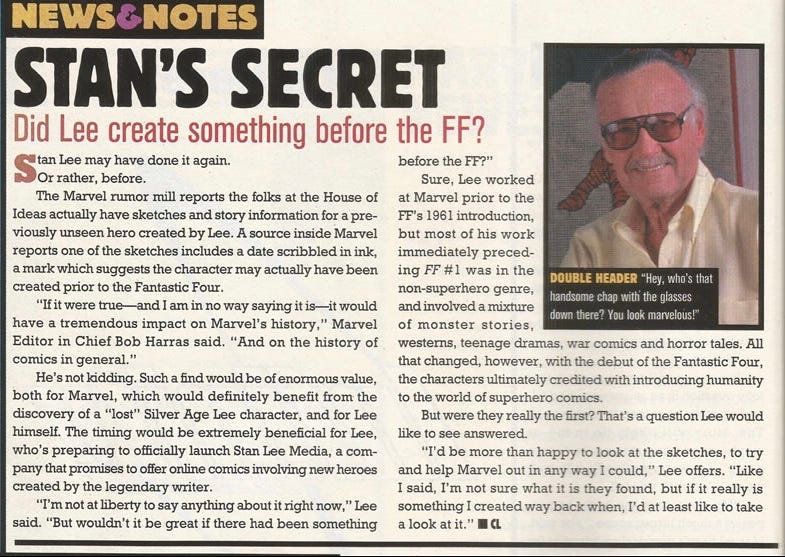
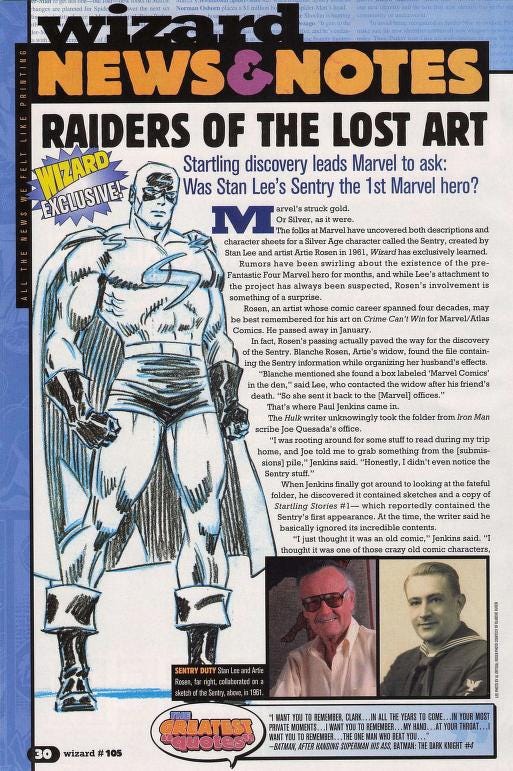
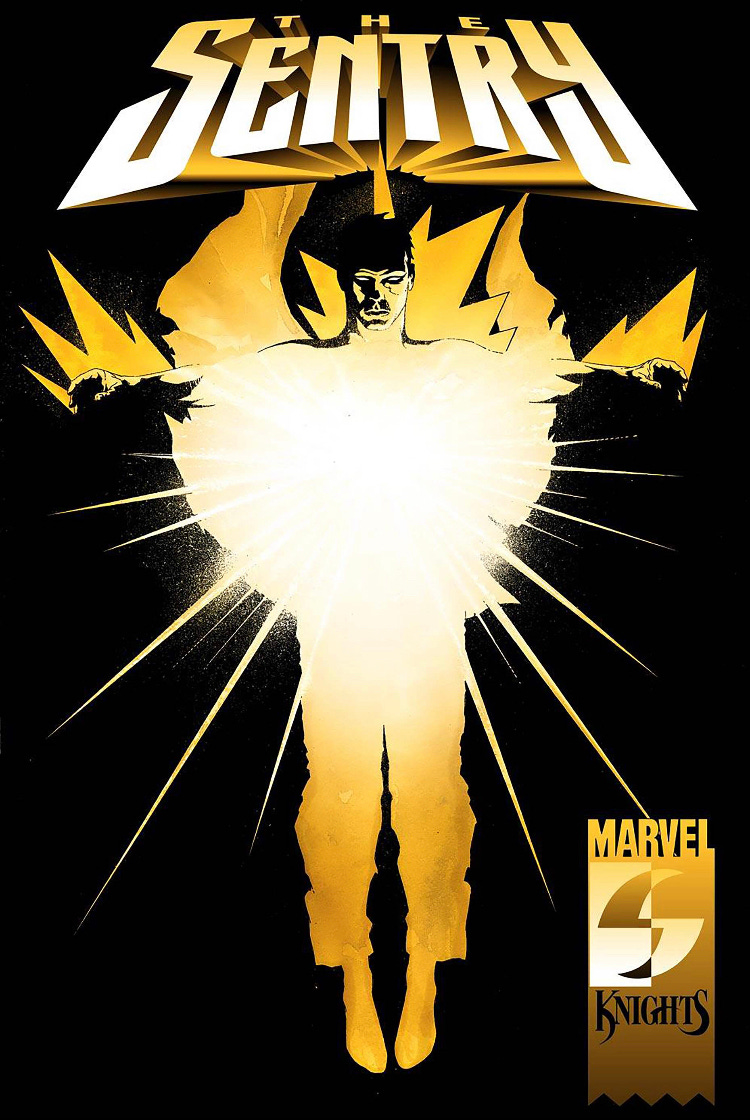
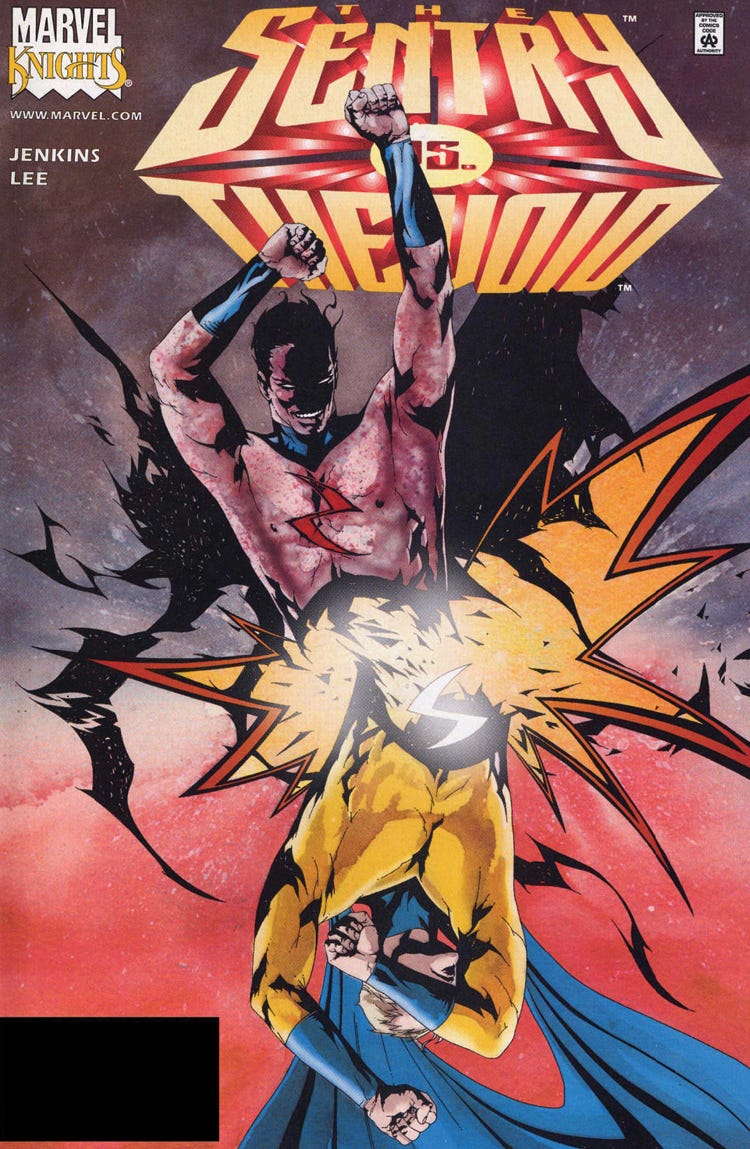
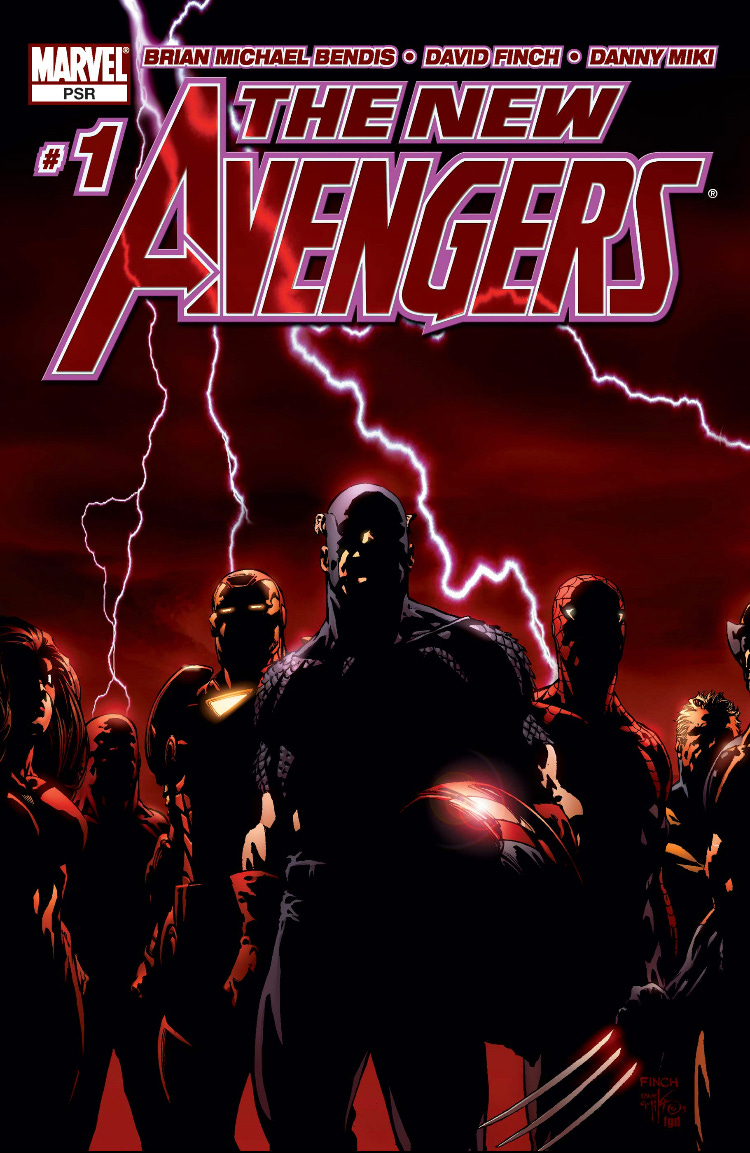
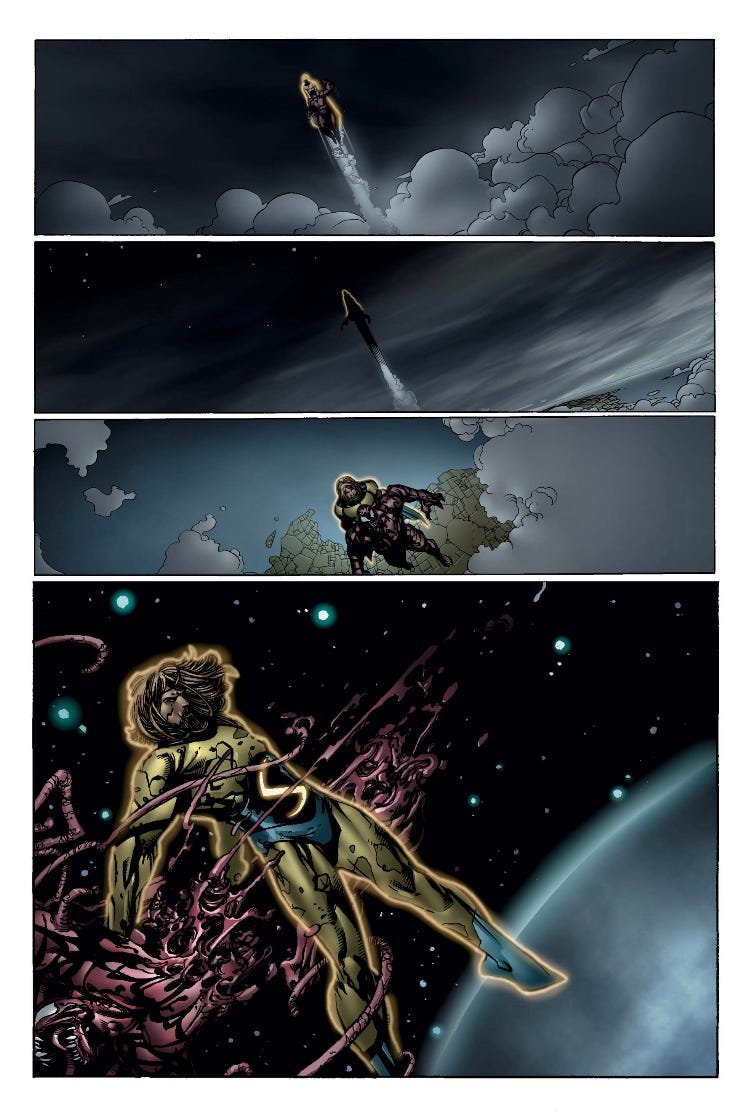
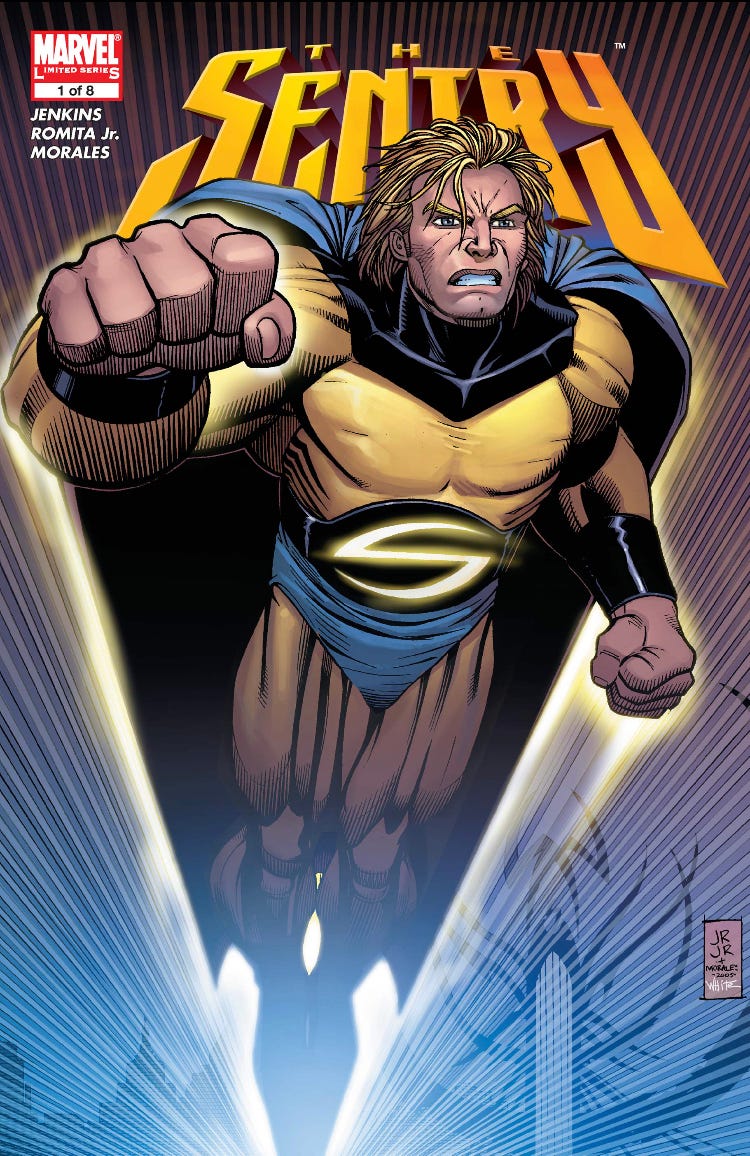
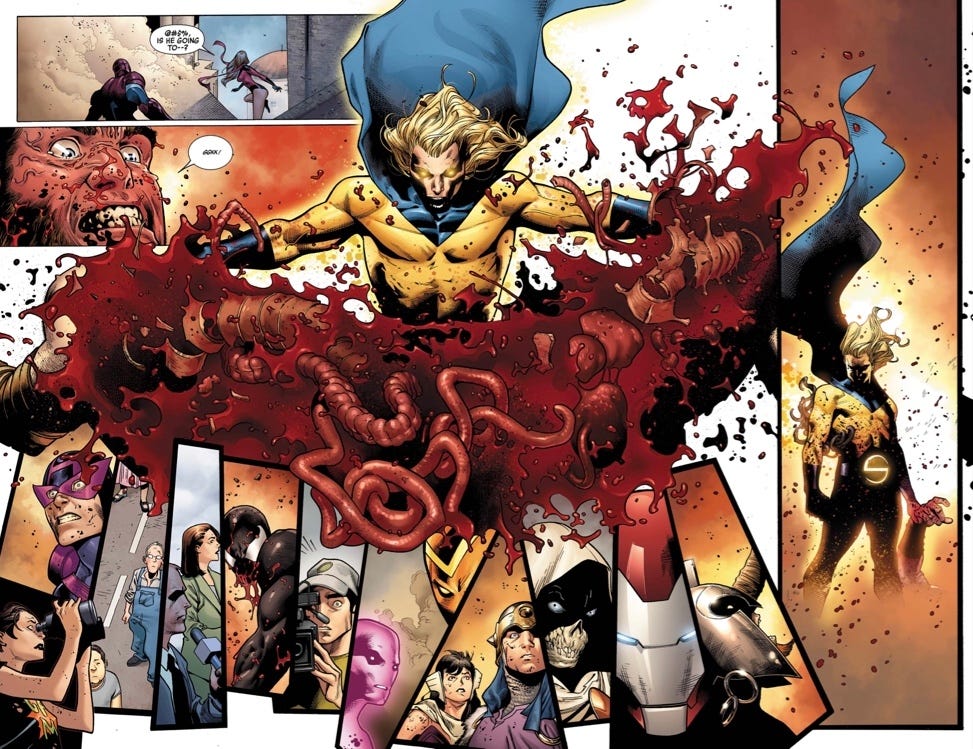
Wow I had no idea about the drawings hoax - crazy but brilliant! I would have fully believed it.
I think there was a little nod to that in the Marvel Studios opening for Thunderbolts which made me and my friend quite hyped haha (we were of course thinking how Sentry was retconned into always being in the Marvel Universe from the start!)
This was an interesting article, even though I don’t really care for The Sentry, since he’s not exactly a positive representation of DID.
I didn’t know (or maybe I had forgotten?) about the whole Stan Lee hoax thing. Yeah, you’re right, something like that wouldn’t work in today’s world. It would get debunked in about two seconds.
I might need to do a post and/or podcast about the Sentry for my Dissociation Representation…eventually. I’ve been trying to start with some of the characters and stories that I actually like first!
Leyna